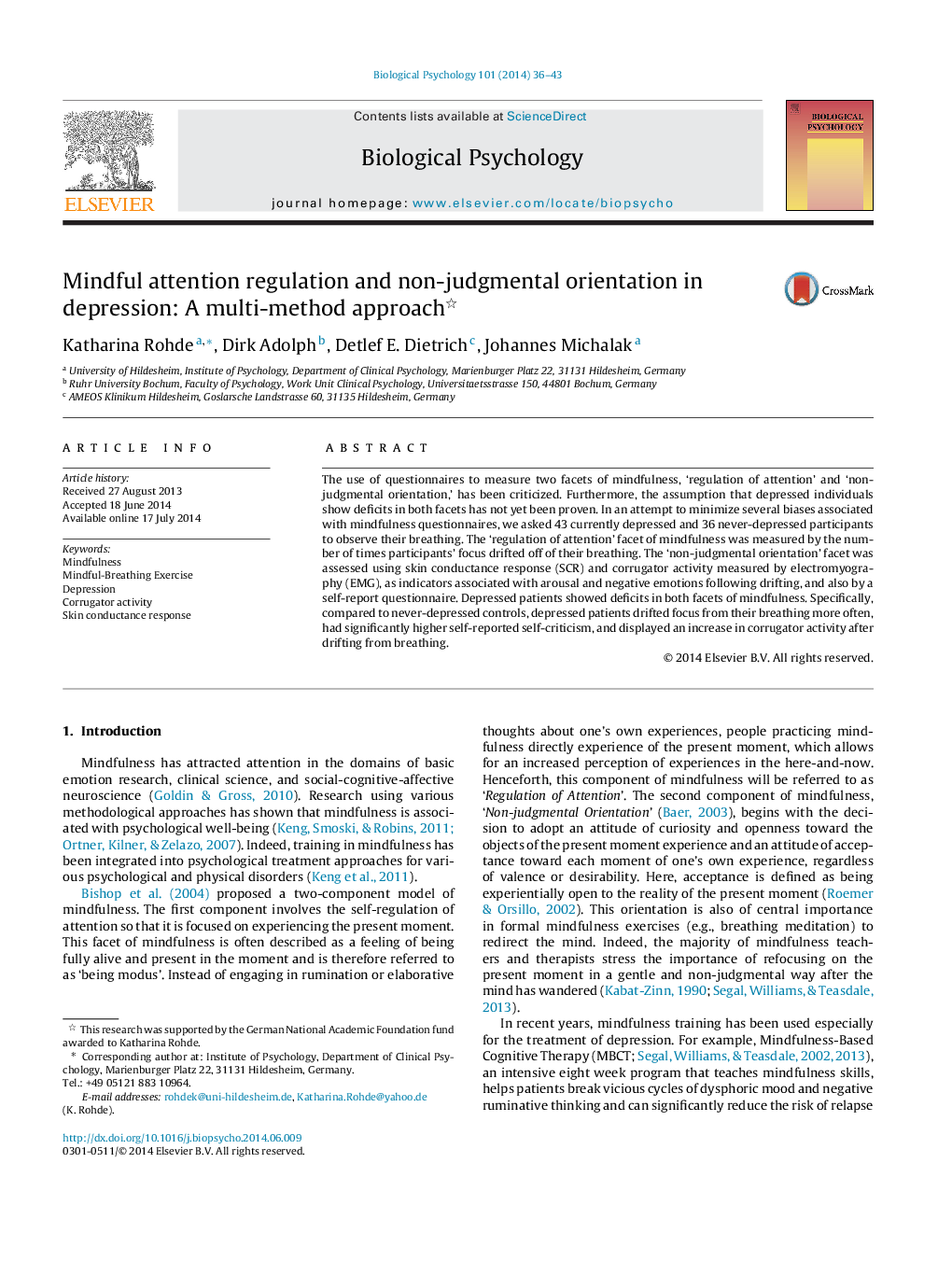| Article ID | Journal | Published Year | Pages | File Type |
|---|---|---|---|---|
| 920888 | Biological Psychology | 2014 | 8 Pages |
•Currently depressed and never depressed participants conducted a mindfulness breathing task.•Skin conductance response and EMG corrugator activity were measured after drifting.•Patients had deficits in staying mindfully in contact with their breath.•Patients had deficits in coming back to their breath non-judgmentally following drifting.•Interventions fostering mindfulness and self-compassion might be crucial.
The use of questionnaires to measure two facets of mindfulness, ‘regulation of attention’ and ‘non-judgmental orientation,’ has been criticized. Furthermore, the assumption that depressed individuals show deficits in both facets has not yet been proven. In an attempt to minimize several biases associated with mindfulness questionnaires, we asked 43 currently depressed and 36 never-depressed participants to observe their breathing. The ‘regulation of attention’ facet of mindfulness was measured by the number of times participants’ focus drifted off of their breathing. The ‘non-judgmental orientation’ facet was assessed using skin conductance response (SCR) and corrugator activity measured by electromyography (EMG), as indicators associated with arousal and negative emotions following drifting, and also by a self-report questionnaire. Depressed patients showed deficits in both facets of mindfulness. Specifically, compared to never-depressed controls, depressed patients drifted focus from their breathing more often, had significantly higher self-reported self-criticism, and displayed an increase in corrugator activity after drifting from breathing.
